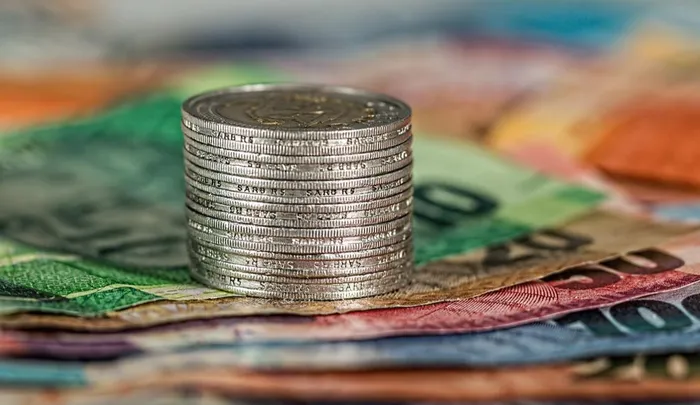South Africa's debt trap
Risks

According to the Banking Association of South Africa Annual Review, loans can serve legitimate purposes.
Image: Pixabay
SOUTH Africa faces one of the world's highest unemployment rates at 32.9%, according to Statistics South Africa's Quarterly Labour Force Survey (Q1 2025). This harsh economic reality has pushed millions into a dangerous relationship with debt that threatens to become a national crisis.
When loans help, when they hurt
According to the Banking Association of South Africa Annual Review, loans can serve legitimate purposes:
- Funding education and skills development
- Financing home purchases and improvements
- Supporting business startups and expansions
- Managing temporary financial emergencies
However, the National Credit Regulator's April 2025 Quarterly Report highlights significant risks:
- Unsecured personal loans grew by 21% year-on-year
- Unregistered lenders charge interest rates as high as 30 to 50% per month
- 62% of South Africans in the lowest income quintile borrowed from informal lenders at least once in the past year
- The average microfinance loan amount is R2 200.
The grant-debt connection
The Department of Social Development's 2025 Grant Impact Assessment reports that the R350 (gone up slightly) Social Relief of Distress (SRD) grant, while providing essential support, has created unintended consequences like no interest in seeking gainful employment. Recipients often qualify for microloans based on this grant income, leading to a cycle of dependency and debt.
The real numbers: a shocking reality
Debt Busters' Q1 2025 Debt Index reveals the extent of South Africa's debt crisis:
- The average South African spends 69% of take-home pay servicing debt - up from 53% in 2016
- 91% of debt counselling applicants have at least one personal loan
- 37% rely on payday loans for basics like food and electricity
- Low-income earners spend 76% of income on debt repayments
- Those earning R35 000 or more spend a record 77% servicing debt.
The impact of municipal increases
According to eThekwini Municipality's Approved Budget (2025/26), possible recent municipal rate increases have exacerbated financial pressures when inflation is around 2 to 3%:
- 6 to 9% property rate hikes
- 9 to 14% for domestic and business refuse collection and sanitation
- 12,72% electricity increases
- 15 to 16% water tariff spikes
The University of KwaZulu-Natal's Economic Impact Study (2025) reports these increases have forced many households to take loans simply to cover basic utilities.
The Debt Collection Reality
The National Debt Mediation Association (NDMA) reports a 34% increase in complaints about debt collection practices since 2023. According to their 2025 Consumer Protection Report, common grievances include excessive contact, workplace harassment, and intimidation tactics.
A University of Pretoria study found that 12% of formal sector employees have at least one garnishee order against their salary, with the average order taking 25% of their income.
The hidden toll on health and society
The South African Depression and Anxiety Group's 2025 report documents the connection between debt and mental health:
- 68% of severely indebted South Africans show clinical anxiety or depression
- Financial distress helplines receive over 300 calls daily.
The Medical Research Council Public Health Reports indicate:
- Hospital admissions for stress-related illnesses rose 14% year-on-year
- Suicide rates related to financial distress increased by 23% since 2021
- Domestic violence incidents are 34% higher in households experiencing severe debt stress.
Finding a way forward
The National Treasury's Financial Inclusion Strategy (2025) outlines several approaches to addressing the debt crisis:
- Stricter enforcement of the National Credit Act
- Expanded financial literacy programs
- Improved regulation of microfinance institutions
- Support for community-based savings schemes
The Banking Association's Consumer Credit Rehabilitation Initiative reports that debt counselling services have helped restructure over R700 million in debt during Q1 2025 alone
According to the National Credit Regulator, interest rates for unsecured debt under debt counselling can be reduced to approximately 2.5% per annum, compared to market rates averaging 25.3%.
Solutions under consideration
The Department of Social Development's Policy Paper (March 2025) proposes several alternatives to the current grant system:
- Skills development programs tied to grant distribution
- Conditional cash transfers requiring financial literacy training
- Community work programmes providing income and work experience.
The South African Reserve Bank's Financial Stability Review recommends stronger regulations on lending practices and more transparent debt collection procedures.
The path out of South Africa's debt trap requires both personal responsibility and systemic change. While loans can offer temporary relief or investment opportunities, the current lending environment has created a crisis that threatens the nation's economic and social wellbeing.
For those already struggling, help is available through resources listed by the National Credit Regulator and organisations like the National Debt Mediation Association and SADAG's Financial Distress Helpline.

Sanjith Hannuman
Image: Supplied
